Do you have a question about the Toyota 2003 RAV4 and is the answer not in the manual?
Details the layout and components of the instrument panel.
Explains the layout and functions of the instrument cluster.
Lists and explains various indicator lights and symbols on the instrument panel.
Explains the operation of keys and different vehicle doors.
Describes the vehicle's theft prevention system involving a transponder chip in the key.
Covers locking and unlocking procedures for the side doors.
Details the operation of the power window system.
Instructions for locking and unlocking the back door.
Steps for opening and closing the vehicle's hood.
Information on operating the fuel tank cap.
Operation of the electric moon roof system.
Details adjustments and usage of seats, seat belts, steering wheel, and mirrors.
Explains how to adjust front and rear seats for safety and comfort.
Provides important safety information and usage instructions for seat belts.
Describes how to adjust the steering wheel angle for optimal driving position.
Explains how to adjust and use the outside rear view mirrors.
Covers the operation of headlights, turn signals, wipers, and defogger systems.
Explains how to operate headlights, turn signals, and their related functions.
Details how to activate and use the emergency hazard warning lights.
Describes the operation of windshield wipers and the washer system.
Explains how to use the rear window wiper and washer.
Covers the function and operation of the rear window and mirror defogging systems.
Explains the various gauges, meters, and service reminder indicators.
Describes the function and operation of the fuel gauge.
Explains the engine coolant temperature gauge and what to do if overheating occurs.
Lists and explains various warning lights and buzzers and their meanings.
Covers the ignition switch, transmission operation, and parking brake.
Details the operation of the ignition switch and steering lock mechanism.
Explains the operation of the automatic transmission and shift lever positions.
Describes how to apply and release the parking brake.
Explains how to use the cruise control system for maintaining vehicle speed.
Provides information on the vehicle's car audio system, including basic operation.
Covers the basic operation of the audio system, including turning it on/off and switching functions.
Details the operation and controls of the vehicle's air conditioning system.
Identifies and explains the function of the air conditioning system controls.
Describes the different air flow selector settings and their effects.
Offers tips for efficient and effective operation of the air conditioning system.
Covers various other equipment and accessories in the vehicle.
Explains how to set and operate the vehicle's digital clock.
Details the use of the cigarette lighter and ashtrays.
Describes the function and usage of the vehicle's power outlets.
Explains how to open and lock the glove box.
Provides instructions for installing a garage door opener transmitter.
Describes the different types of auxiliary storage boxes and their usage.
Explains how to use tie-down hooks for securing luggage.
Details how to install and use the luggage cover.
Explains how to install and use the separation net for the luggage compartment.
Covers the installation and usage of the roof luggage carrier.
Provides instructions on proper placement and precautions for floor mats.
Safety precautions specific to driving the vehicle off-road.
Guidelines for the initial break-in period of a new vehicle for optimal performance.
Information on the correct type of fuel and fuel quality requirements.
Warnings and precautions regarding engine exhaust fumes and their hazards.
Information about the specific type of spark plugs used and their maintenance.
Explains the vehicle's brake system, including ABS and booster operation.
Guidelines for safely stowing luggage and cargo in the vehicle.
Details on locating the vehicle's identification number (VIN).
Information on different types of tires and their suitability for various driving conditions.
Covers the essential steps and tips for starting and driving the vehicle.
Steps to take before starting the engine for safety and proper operation.
Instructions on the normal procedure for starting the vehicle's engine.
Advice for driving safely and effectively in various weather and road conditions.
Specific precautions and safety measures for off-road driving.
Recommendations for driving and vehicle care during winter conditions.
Instructions and precautions for dinghy towing an automatic transmission vehicle.
Instructions and precautions for dinghy towing a manual transmission vehicle.
Comprehensive guide on trailer towing, including weight limits and safety precautions.
Tips and advice for improving fuel economy and extending vehicle life.
Troubleshooting steps for when the vehicle fails to start or cranks slowly.
What to do if the engine stalls while the vehicle is in motion.
Steps to take if the vehicle's engine overheats.
Instructions on how to change a flat tire safely and properly.
Information on proper towing procedures and methods for different vehicle models.
How to resolve issues with shifting the automatic transmission selector lever.
Steps to take if you lose your vehicle keys.
Actions to take if you lose your wireless remote control transmitter.
Common causes of corrosion and methods for prevention.
Instructions and tips for washing and waxing the vehicle to maintain its finish.
Procedures for cleaning the vehicle's interior surfaces, including upholstery and carpets.
Details on regular maintenance and owner responsibilities.
Routine checks and tasks for general vehicle maintenance.
Clues that indicate the vehicle may need repair or adjustment.
Information on vehicle emissions inspection programs and the OBD system.
Identifies major components located in the engine compartment.
Shows the locations of the vehicle's fuse boxes.
Essential safety precautions to observe when performing DIY maintenance.
Lists necessary parts and tools for common DIY maintenance tasks.
Instructions on correctly positioning the jack for vehicle lifting.
Covers maintenance checks for the engine and chassis components.
Step-by-step guide on how to check and maintain the engine oil level.
Instructions for checking and maintaining the engine coolant level.
Procedures for checking the brake fluid level and type.
Guidelines for checking and maintaining proper tire pressure.
Information on checking tire condition and the process for replacing tires.
Explanation of tire rotation to equalize wear and extend tire life.
Covers maintenance and checks for the vehicle's electrical components.
How to check the battery's condition and perform basic maintenance.
Instructions for checking and replacing vehicle fuses.
Steps for refilling the windshield washer fluid reservoir.
Guide on how to access and replace various exterior and interior light bulbs.
Lists the vehicle's overall dimensions and weight specifications.
Details the engine specifications, including bore, stroke, and displacement.
Information regarding fuel type, tank capacity, and fuel system.
Covers various service specifications like valve clearance, spark plugs, and oil capacities.
Tire size, pressure, wheel size, and torque specifications.
Identifies fuse types and their circuit functions for both instrument panel and engine compartment.
Guidance on reporting vehicle safety defects to NHTSA and Toyota.
Explanation of the DOT tire quality grading system for treadwear, traction, and temperature.
Introduction to the warranty booklet and owner responsibilities.
Toyota's commitment to customer satisfaction and vehicle quality.
Details the policy for transportation assistance during warranty repairs.
Steps to follow for resolving concerns or issues with the vehicle or dealership.
A summary of the vehicle's warranty coverages, including limited and emission warranties.
Outlines the general terms and conditions of Toyota's limited warranties.
Identifies Toyota Motor Sales, U.S.A., Inc. as the warrantor.
Specifies which vehicles are covered by the warranties.
Explains how different warranty terms may apply to specific parts or systems.
Defines the start date of the warranty period.
States that covered repairs are made at no cost for parts and labor.
Information on the use of new or remanufactured parts for replacements.
Outlines limitations of the warranty remedies and implied warranties.
Explains specific legal rights granted by the warranties that may vary by state.
Details the duration and scope of coverage for various warranty items.
Covers repairs for defects in materials/workmanship, with specific time/mileage limits.
Covers repairs for defects in powertrain components, with longer coverage terms.
Covers body panel perforation from corrosion, with mileage limitations.
Covers defects in seatbelt and airbag systems, with specific coverage terms.
Covers towing service for inoperable vehicles due to warranted part failure.
Lists damages and failures not covered by the warranty.
Tires are covered by a separate manufacturer's warranty.
Deterioration from normal wear and tear is not covered.
Normal maintenance services are not covered.
Warranty is void if the odometer has been altered.
Vehicles with salvage or total-loss titles are excluded.
Incidental or consequential damages are not covered.
Toyota's liability is limited to repairs and adjustments.
Process for resolving warranty disputes, including the Dispute Settlement Program.
Covers defects causing the vehicle to fail federal emissions standards.
Covers repairs if the vehicle fails an EPA-approved emissions test.
Procedure for claiming warranty if the vehicle fails an emissions test.
Contact information for inquiries or complaints regarding emissions warranty.
Lists specific components covered under the long-term emissions defect warranty.
Components of the air/fuel metering system.
Components of the air induction system.
Components of the vehicle's catalytic converter system.
Components of the evaporative emission control system.
Components of the vehicle's ignition system.
Components of the PCV system.
Various other parts used in the emission control systems.
Owner's responsibility for required maintenance and proper vehicle use.
Recommendations for using Genuine Toyota Parts for repairs.
Explains owner's rights and responsibilities under the California emissions warranty.
Details the coverage periods for the California emissions warranty.
Owner's responsibility for required maintenance and proper vehicle use.
Lists failures and non-compliance not covered by the California emissions warranty.
Lists specific components covered under the long-term emissions defect warranty.
Components of the air/fuel metering system.
Components of the air induction system.
Components of the vehicle's catalytic converter system.
Components of the evaporative emission control system.
Components of the vehicle's ignition system.
Components of the PCV system.
Various other parts used in the emission control systems.
Owner's responsibility for required maintenance and proper vehicle use.
Recommendations for using Genuine Toyota Parts for repairs.
Procedure for claiming warranty if the vehicle fails a smog-check test.
Information on procedures if warranty repairs cannot be completed within the specified time.
Contact information for inquiries or concerns about the California emissions warranty.
How to obtain warranty service for original equipment tires.
Contact information for various original equipment tire manufacturers.
General information regarding vehicle operation and maintenance responsibilities.
Recommendations on where to have vehicle maintenance performed.
Guidance on using Genuine Toyota Parts versus non-Genuine parts.
How to obtain warranty service in different geographic regions.
Warranty service procedures within the US, its territories, and Canada.
Warranty service procedures when traveling outside the US.
Procedures for obtaining warranty repairs in emergency situations.
Details the layout and components of the instrument panel.
Explains the layout and functions of the instrument cluster.
Lists and explains various indicator lights and symbols on the instrument panel.
Explains the operation of keys and different vehicle doors.
Describes the vehicle's theft prevention system involving a transponder chip in the key.
Covers locking and unlocking procedures for the side doors.
Details the operation of the power window system.
Instructions for locking and unlocking the back door.
Steps for opening and closing the vehicle's hood.
Information on operating the fuel tank cap.
Operation of the electric moon roof system.
Details adjustments and usage of seats, seat belts, steering wheel, and mirrors.
Explains how to adjust front and rear seats for safety and comfort.
Provides important safety information and usage instructions for seat belts.
Describes how to adjust the steering wheel angle for optimal driving position.
Explains how to adjust and use the outside rear view mirrors.
Covers the operation of headlights, turn signals, wipers, and defogger systems.
Explains how to operate headlights, turn signals, and their related functions.
Details how to activate and use the emergency hazard warning lights.
Describes the operation of windshield wipers and the washer system.
Explains how to use the rear window wiper and washer.
Covers the function and operation of the rear window and mirror defogging systems.
Explains the various gauges, meters, and service reminder indicators.
Describes the function and operation of the fuel gauge.
Explains the engine coolant temperature gauge and what to do if overheating occurs.
Lists and explains various warning lights and buzzers and their meanings.
Covers the ignition switch, transmission operation, and parking brake.
Details the operation of the ignition switch and steering lock mechanism.
Explains the operation of the automatic transmission and shift lever positions.
Describes how to apply and release the parking brake.
Explains how to use the cruise control system for maintaining vehicle speed.
Provides information on the vehicle's car audio system, including basic operation.
Covers the basic operation of the audio system, including turning it on/off and switching functions.
Details the operation and controls of the vehicle's air conditioning system.
Identifies and explains the function of the air conditioning system controls.
Describes the different air flow selector settings and their effects.
Offers tips for efficient and effective operation of the air conditioning system.
Covers various other equipment and accessories in the vehicle.
Explains how to set and operate the vehicle's digital clock.
Details the use of the cigarette lighter and ashtrays.
Describes the function and usage of the vehicle's power outlets.
Explains how to open and lock the glove box.
Provides instructions for installing a garage door opener transmitter.
Describes the different types of auxiliary storage boxes and their usage.
Explains how to use tie-down hooks for securing luggage.
Details how to install and use the luggage cover.
Explains how to install and use the separation net for the luggage compartment.
Covers the installation and usage of the roof luggage carrier.
Provides instructions on proper placement and precautions for floor mats.
Safety precautions specific to driving the vehicle off-road.
Guidelines for the initial break-in period of a new vehicle for optimal performance.
Information on the correct type of fuel and fuel quality requirements.
Warnings and precautions regarding engine exhaust fumes and their hazards.
Information about the specific type of spark plugs used and their maintenance.
Explains the vehicle's brake system, including ABS and booster operation.
Guidelines for safely stowing luggage and cargo in the vehicle.
Details on locating the vehicle's identification number (VIN).
Information on different types of tires and their suitability for various driving conditions.
Covers the essential steps and tips for starting and driving the vehicle.
Steps to take before starting the engine for safety and proper operation.
Instructions on the normal procedure for starting the vehicle's engine.
Advice for driving safely and effectively in various weather and road conditions.
Specific precautions and safety measures for off-road driving.
Recommendations for driving and vehicle care during winter conditions.
Instructions and precautions for dinghy towing an automatic transmission vehicle.
Instructions and precautions for dinghy towing a manual transmission vehicle.
Comprehensive guide on trailer towing, including weight limits and safety precautions.
Tips and advice for improving fuel economy and extending vehicle life.
Troubleshooting steps for when the vehicle fails to start or cranks slowly.
What to do if the engine stalls while the vehicle is in motion.
Steps to take if the vehicle's engine overheats.
Instructions on how to change a flat tire safely and properly.
Information on proper towing procedures and methods for different vehicle models.
How to resolve issues with shifting the automatic transmission selector lever.
Steps to take if you lose your vehicle keys.
Actions to take if you lose your wireless remote control transmitter.
Common causes of corrosion and methods for prevention.
Instructions and tips for washing and waxing the vehicle to maintain its finish.
Procedures for cleaning the vehicle's interior surfaces, including upholstery and carpets.
Details on regular maintenance and owner responsibilities.
Routine checks and tasks for general vehicle maintenance.
Clues that indicate the vehicle may need repair or adjustment.
Information on vehicle emissions inspection programs and the OBD system.
Identifies major components located in the engine compartment.
Shows the locations of the vehicle's fuse boxes.
Essential safety precautions to observe when performing DIY maintenance.
Lists necessary parts and tools for common DIY maintenance tasks.
Instructions on correctly positioning the jack for vehicle lifting.
Covers maintenance checks for the engine and chassis components.
Step-by-step guide on how to check and maintain the engine oil level.
Instructions for checking and maintaining the engine coolant level.
Procedures for checking the brake fluid level and type.
Guidelines for checking and maintaining proper tire pressure.
Information on checking tire condition and the process for replacing tires.
Explanation of tire rotation to equalize wear and extend tire life.
Covers maintenance and checks for the vehicle's electrical components.
How to check the battery's condition and perform basic maintenance.
Instructions for checking and replacing vehicle fuses.
Steps for refilling the windshield washer fluid reservoir.
Guide on how to access and replace various exterior and interior light bulbs.
Lists the vehicle's overall dimensions and weight specifications.
Details the engine specifications, including bore, stroke, and displacement.
Information regarding fuel type, tank capacity, and fuel system.
Covers various service specifications like valve clearance, spark plugs, and oil capacities.
Tire size, pressure, wheel size, and torque specifications.
Identifies fuse types and their circuit functions for both instrument panel and engine compartment.
Guidance on reporting vehicle safety defects to NHTSA and Toyota.
Explanation of the DOT tire quality grading system for treadwear, traction, and temperature.
Introduction to the warranty booklet and owner responsibilities.
Toyota's commitment to customer satisfaction and vehicle quality.
Details the policy for transportation assistance during warranty repairs.
Steps to follow for resolving concerns or issues with the vehicle or dealership.
A summary of the vehicle's warranty coverages, including limited and emission warranties.
Outlines the general terms and conditions of Toyota's limited warranties.
Identifies Toyota Motor Sales, U.S.A., Inc. as the warrantor.
Specifies which vehicles are covered by the warranties.
Explains how different warranty terms may apply to specific parts or systems.
Defines the start date of the warranty period.
States that covered repairs are made at no cost for parts and labor.
Information on the use of new or remanufactured parts for replacements.
Outlines limitations of the warranty remedies and implied warranties.
Explains specific legal rights granted by the warranties that may vary by state.
Details the duration and scope of coverage for various warranty items.
Covers repairs for defects in materials/workmanship, with specific time/mileage limits.
Covers repairs for defects in powertrain components, with longer coverage terms.
Covers body panel perforation from corrosion, with mileage limitations.
Covers defects in seatbelt and airbag systems, with specific coverage terms.
Covers towing service for inoperable vehicles due to warranted part failure.
Lists damages and failures not covered by the warranty.
Tires are covered by a separate manufacturer's warranty.
Deterioration from normal wear and tear is not covered.
Normal maintenance services are not covered.
Warranty is void if the odometer has been altered.
Vehicles with salvage or total-loss titles are excluded.
Incidental or consequential damages are not covered.
Toyota's liability is limited to repairs and adjustments.
Process for resolving warranty disputes, including the Dispute Settlement Program.
Covers defects causing the vehicle to fail federal emissions standards.
Covers repairs if the vehicle fails an EPA-approved emissions test.
Procedure for claiming warranty if the vehicle fails an emissions test.
Contact information for inquiries or complaints regarding emissions warranty.
Lists specific components covered under the long-term emissions defect warranty.
Components of the air/fuel metering system.
Components of the air induction system.
Components of the vehicle's catalytic converter system.
Components of the evaporative emission control system.
Components of the vehicle's ignition system.
Components of the PCV system.
Various other parts used in the emission control systems.
Owner's responsibility for required maintenance and proper vehicle use.
Recommendations for using Genuine Toyota Parts for repairs.
Explains owner's rights and responsibilities under the California emissions warranty.
Details the coverage periods for the California emissions warranty.
Owner's responsibility for required maintenance and proper vehicle use.
Lists failures and non-compliance not covered by the California emissions warranty.
Lists specific components covered under the long-term emissions defect warranty.
Components of the air/fuel metering system.
Components of the air induction system.
Components of the vehicle's catalytic converter system.
Components of the evaporative emission control system.
Components of the vehicle's ignition system.
Components of the PCV system.
Various other parts used in the emission control systems.
Owner's responsibility for required maintenance and proper vehicle use.
Recommendations for using Genuine Toyota Parts for repairs.
Procedure for claiming warranty if the vehicle fails a smog-check test.
Information on procedures if warranty repairs cannot be completed within the specified time.
Contact information for inquiries or concerns about the California emissions warranty.
How to obtain warranty service for original equipment tires.
Contact information for various original equipment tire manufacturers.
General information regarding vehicle operation and maintenance responsibilities.
Recommendations on where to have vehicle maintenance performed.
Guidance on using Genuine Toyota Parts versus non-Genuine parts.
How to obtain warranty service in different geographic regions.
Warranty service procedures within the US, its territories, and Canada.
Warranty service procedures when traveling outside the US.
Procedures for obtaining warranty repairs in emergency situations.
| Brand | Toyota |
|---|---|
| Model | 2003 RAV4 |
| Category | Automobile |
| Language | English |
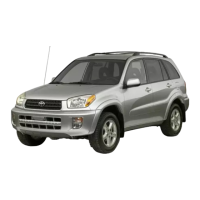


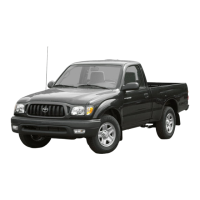
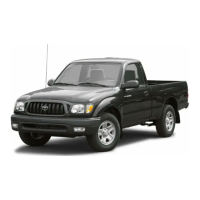
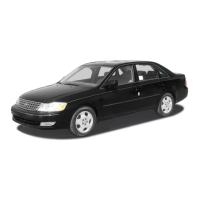
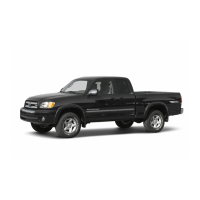
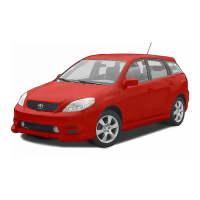

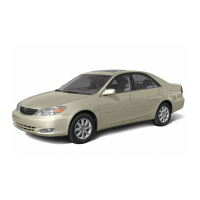


